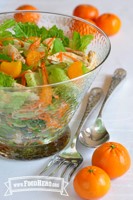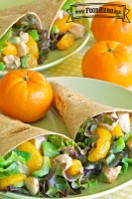By Lindsey Breunig-Rodriguez
Recently I have been thinking about the “Wild West” — a time when there was a lot of discovery and a lot of unknown. I must say, it somewhat feels like we are in a modern-day Wild West. I can only imagine how difficult it was to stay hydrated. Someone probably shared a water canteen and planned travels according to where the next water source would be.
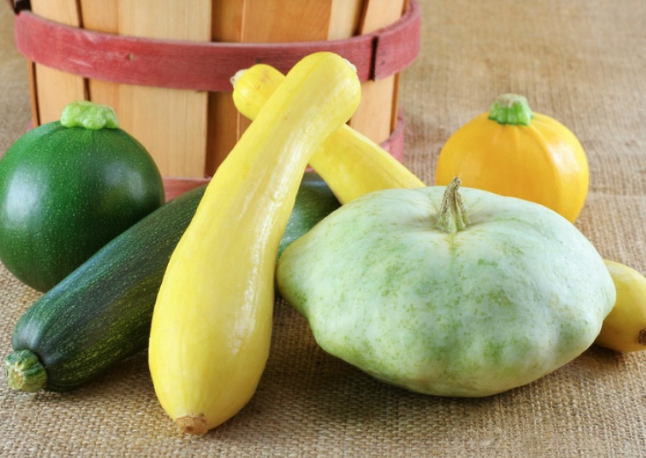
Today we do the same when we camp, go hiking or walking, or are outside for an extended time. To avoid dehydration, we must actively think about drinking more water, and even more so in these hot summer months.
Thankfully, we do not have to solely rely on water; fruits and vegetables also provide us with water. This month we are highlighting a vegetable which consist of 95% water, making it a great source for extra hydration and is even named for its season. Introducing summer squash!
Nutrition:
Per USDA dietary guidelines it is recommended we consume 3 Cups of vegetables daily. Vegetables may be fresh, canned, frozen, or dried, and may be whole, cut-up, or pureed. It all counts!
Summer squash is a great source of vitamin C, which keeps our immune system strong and helps our bodies heal quickly. Additionally, summer squash is fat free, saturated-fat free, sodium free, cholesterol free, and low in calories (around 20 calories in 1 cup). It is not recommended to peel summer squash because most all the vitamins and minerals are found in the skin.
Shopping, Storage, and Preparation:
There are two types of squash: summer and winter. Today we are focusing on summer squash. There are many varieties of squash, some names you will see are: patty pan, yellow crookneck, yellow straightneck, chayotes, and zucchini. For all squash varieties, choose firm, glossy, small to medium-sized squash. Avoid squash that is soft, moldy, or sunken in spots. Though usable, larger squash tend to be less flavorful and tougher.
Right before using, wash squash by rubbing the skin under cool running water. Refrigerate summer squash for up to one week or freeze and use within three months. If freezing, cut it into pieces and blanch (placing vegetables in boiling water for a short time and then placing in freezing water.). For more instructions, read here.
Enjoy:
Due to its mild flavor summer squash can be prepared multiple ways. It is important, however, to remember that seasonings or other ingredients added to squash will change the nutritional value. Below are some ways to enjoy it:
Roast — Cut squash in slices and drizzle with olive oil and low‐sodium seasoning before placing on a baking sheet. Cook 10-15 minutes or until tender.
Grate — Add raw, grated squash to green salads, muffins, or cookies. Use a vegetable peeler to make ribbons in place of pasta noodles.
Grill — Pair squash with tomatoes, onions, mushrooms, peppers, or fruit.
Raw — Enjoy in salads or dipped in hummus or a low-fat dip.
Sauté — Heat pan to high, add oil to coat the pan and add sliced squash. Sauté until lightly brown, about 3‐5 minutes, or tender. Use as side dish or add to dishes like stir fry or pasta.
Check out these other tasty recipes too: Italian Spinach and Zucchini Meatballs or Baked Zucchini Sticks
See below different ways to cut and prepare zucchini – thank you to Montana State University Extension for the graphic:
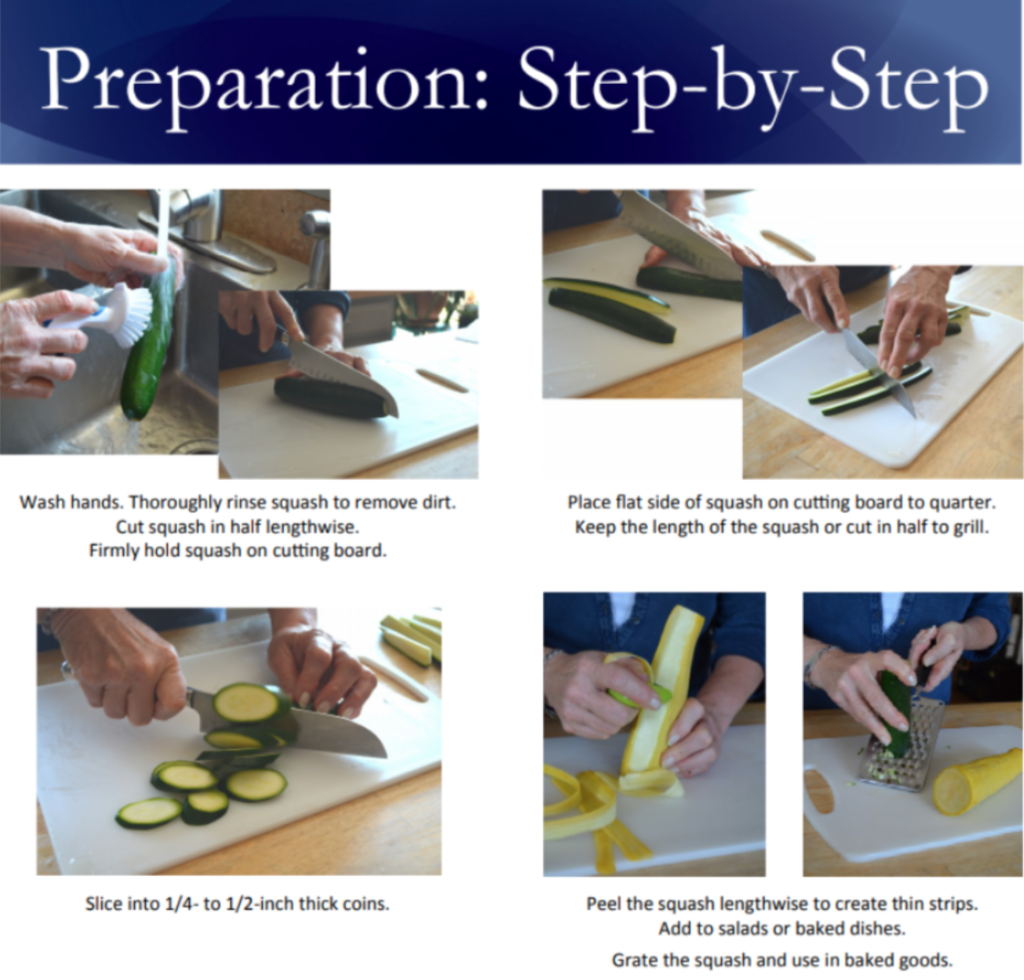
Texas A&M AgriLife Extension
Due to the continued spread of COVID-19 and the challenges it poses to communities across Texas, Texas A&M AgriLife Extension and many others continue to practice public health recommendations. Whether we are communicating online or face-to-face know that program content will always be research-backed to help individuals navigate decisions for themselves and their families. For information on resources, ideas, and programs for yourself and family visit Texas A&M AgriLife’s HUB.
USDA is an equal opportunity provider and employer. This material was funded by USDA’s Supplemental Nutrition Assistance Program — SNAP. To learn more about the Supplemental Nutrition Assistance Program (SNAP) or to apply for benefits, visit www.yourtexasbenefits.com

Lindsey Breunig-Rodriguez is an Extension Agent for the Better Living for Texans program with the Texas A&M AgriLife Extension Service. She is originally from Grapevine but now calls Waco home. A graduate from Baylor University, she loves to venture out to Cameron Park, visit the local Farmers Market, and try out the awesome eateries in Waco. If you see her and hear a loud bark, that’s her pup Lucy Ann just saying hello.
The Act Locally Waco blog publishes posts with a connection to these aspirations for Waco. If you are interested in writing for the Act Locally Waco Blog, please email ashleyt@actlocallywaco.org for more information.
By Lindsey Breunig-Rodriguez
As we move into July, we are continuing to highlight a seasonal fruit or vegetable. While many of our traditional summer plans and activities look drastically different, we can count on the heat to still be here. With the rising temperatures, it is important to stay hydrated. Of course, increased water intake will be our first recommendation, but we cannot forget that fruits and vegetables provide us with water, too.
If we asked a child what color water is, they may and hopefully respond with blue – which leads us perfectly into the fruit of the month — blueberries. These BLUE fruits not only provide us with nutrients but also with WATER that our body needs. Blueberries are such a fun fruit; they add a beautiful blue color to your favorite dish like in this Berry Cherry Tart. They also make a fun addition as “eyes” if you’re making a silly face on Animal Toast!
Shopping:
When shopping for blueberries, you traditionally will find them in the prepackaged containers. Before placing one in your cart, examine the entire package and look for blueberries that are firm, plump, and a royal blue color with a silvery frost. Berries should be relatively the same size and free of stems and leaves. Avoid packages that contain moldy berries or stains on the containers, which indicate crushed or bruised fruit.
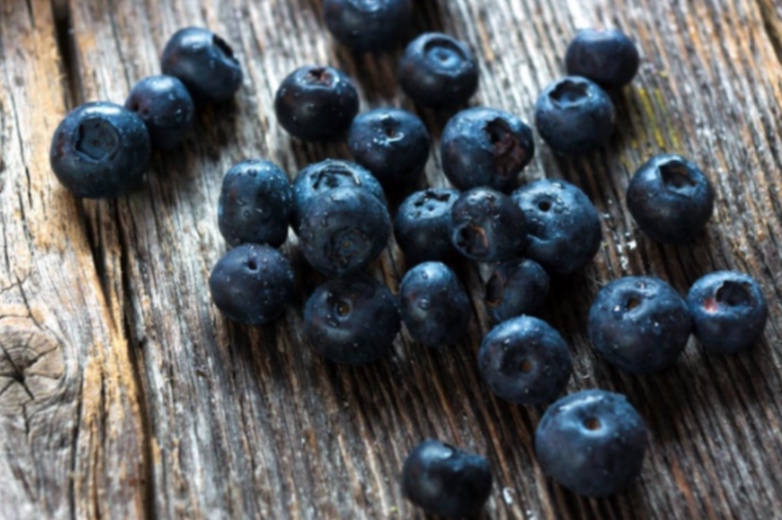
Storage:
Keep unwashed blueberries refrigerated in a container with a lid for up to one week. When blueberries are in season you may find them on sale, and if you find yourself with an abundance of berries, freezing blueberries will help preserve the nutrients and fruit so you and your family can enjoy and save money. Freezing fruit is also a great way to reduce food waste.
For more tips on how to freeze blueberries, watch this video. To freeze, place rinsed blueberries on a paper towel-lined baking sheet in a single layer and freeze for one hour. Place in a container with a lid and freeze for up to nine months.
Use:
Rinse blueberries thoroughly only before preparing. As mentioned earlier you may notice a silvery frost on blueberries, this is a natural preservative that helps to keep the berries fresh. Washing the berries will remove this protective barrier, and the berries will go bad much more quickly. Discard any shriveled or moldy berries. Blueberries can be enjoyed raw or cooked. When baking with frozen berries, do not thaw before using or the juice and color will bleed or leak out. Gently add berries to batter as the last step before baking. Fresh berries will not bleed unless their skin is torn or broken.
Nutrition:
Per USDA dietary guidelines it is recommended we consume 1-2 cups of fruit daily. Fruit may be fresh, canned, frozen, or dried, and may be whole, cut-up, or pureed. It all counts! In general, 1 cup of fruit or 100% fruit juice, or ½ cup of dried fruit can be considered as 1 cup from the Fruit Group.
Blueberries are a great source of Vitamin C, which keeps our immune system strong and helps our bodies heal quickly. Additionally, blueberries are a great source of Vitamin E, which aids in healthy skin and eyes. Lastly, blueberries are high in fiber which will keep us full!
Enjoy:
Blueberries make a delicious nutritional snack that you can enjoy anytime of the day. Check these additional recipes below:
Trying to find the best deal? Always compare the unit price to see the best deal. See the example below, what would you choose?
| Fresh Texas Blueberries, 1 PintCost: $3.07 ($0.28/oz) | No Sugar Added Blueberries – FROZEN, 16 ounces Cost: $3.07 ($0.20/oz) | Vegetable & Fruit Pomegranate Blueberry 100% Juice – 46 ouncesRegular: $3.07 (about $0.07/oz) | No Sugar Added Blueberries – FROZEN, 5 pounds Cost: $14.91 ($0.19/oz) |
Texas A&M AgriLife Extension
Due to the continued spread of COVID-19 and the challenges it poses to communities across Texas, Texas A&M AgriLife Extension and many others continue to practice public health recommendations. Whether we are communicating online or face-to-face know that program content will always be research-backed to help individuals navigate decisions for themselves and their families. For information on resources, ideas, and programs for yourself and family visit Texas A&M AgriLife’s HUB.

Lindsey Breunig-Rodriguez is an Extension Agent for the Better Living for Texans program with the Texas A&M AgriLife Extension Service. She is originally from Grapevine but now calls Waco home. A graduate from Baylor University, she loves to venture out to Cameron Park, visit the local Farmers Market, and try out the awesome eateries in Waco. If you see her and hear a loud bark, that’s her pup Lucy Ann just saying hello.
The Act Locally Waco blog publishes posts with a connection to these aspirations for Waco. If you are interested in writing for the Act Locally Waco Blog, please email ashleyt@actlocallywaco.org for more information.
By Lindsey Breunig-Rodriguez
In this time of increased stress and uncertainty I found it fitting to highlight a fruit that not only tastes great but also symbolizes the qualities of hospitality, which include being welcoming and friendly! You may see this fruit incorporated into home décor, in fact, I had a family member that decorated an entire house with this fruit. It is tasty, sweet, and symbolizes a great reminder for all, and the fruit we are talking about is pineapple!
On the outside a pineapple looks like a giant spiky pine cone, however, once you cut into the inside it is bright yellow, juicy, and sweet-smelling. Tips for selecting the best pineapple include:
- Look for fresh looking and green leaves. Brown or wilted leaves indicate an old fruit.
- The fruit should feel heavy/dense for its size indicating it is full of juice!
- Choose a pineapple that smells sweet on the end.
- Avoid selecting a pineapple with soft or dark spots on the outside or an off smell.
Pineapple can be left at room temperature for 2-4 days before serving. Be mindful to make sure it does not spoil, as it will become softer and juicier the longer it stays out.
Once cut the pineapple should be good in the refrigerator 5-7 days. If its pine cone-like features make it intimidating to cut, check out this quick video from Dinner Tonight for an easy, stress-free way to cut up a pineapple.
Per USDA dietary guidelines, it is recommended we consume 1 to 2 cups of fruit daily. Fruit may be fresh, canned, frozen, or dried, and may be whole, cut-up, or pureed; it all counts. In general, 1 cup of fruit or 100% fruit juice, or ½ cup of dried fruit can be considered as 1 cup from the Fruit Group.
Pineapple is a great source of Vitamin C which keeps our immune system strong and helps our bodies heal quickly. Fortunately, pineapple is tasty in many of the forms listed above. Precut fruit can be convenient and a great snack option but often have a higher price tag.
Pineapple is a delicious, nutritional snack you can enjoy anytime of day. Enjoy it plain, added to salsa, grilled, baked, added to stir fry, and rice. Check out these recipes below!
Enjoy!
Texas A&M AgriLife Extension
Due to the continued spread of COVID-19 and the challenges it poses to communities across Texas, Texas A&M AgriLife Extension and many others continue to practice public health recommendations. Whether we are communicating online or face-to-face, AgriLife content will always be research-backed to help individuals navigate decisions for themselves and their families. For information on resources, ideas, and programs for yourself and family visit Texas A&M AgriLife’s HUB.
Also, I want to take a moment to remind you of our Better Living for Texan’s Vision and Mission. BLT’s Vision is “creating opportunities, changing lives,” and our mission is “to provide research and evidence-based nutrition, health and wellness knowledge to empower individuals, families, and communities to make positive changes for healthier lives.”
When we come together to discuss food and to discuss wellness we strive to make our presence be one of hope, love, and resolve to truly succeed in BLT’s Vision of creating opportunities, changing lives. This is for all Texans, and it is our privilege and responsibility to contribute and to support each other, no matter our race, our religion, or our background.


Lindsey Breunig-Rodriguez is an Extension Agent for the Better Living for Texans program with the Texas A&M AgriLife Extension Service. She is originally from Grapevine but now calls Waco home. A graduate from Baylor University, she loves to venture out to Cameron Park, visit the local Farmers Market, and try out the awesome eateries in Waco. If you see her and hear a loud bark, that’s her pup Lucy Ann just saying hello.
The Act Locally Waco blog publishes posts with a connection to these aspirations for Waco. If you are interested in writing for the Act Locally Waco Blog, please email ashleyt@actlocallywaco.org for more information.
By Lindsey Breunig-Rodriguez
Due to the continued spread of COVID-19 and the challenges it poses to communities across Texas and around the world, Texas A&M AgriLife Extension has suspended all face-to-face events through at least May 20th. We cannot meet face-to-face for programs, but remain committed to providing research-backed information to help individuals navigate the challenges this virus brings. For information on resources, ideas, and programs for yourself and family visit Texas A&M AgriLife’s HUB. Rather than highlighting a specific fruit or vegetable, this month our Better Living for Texans post will focus on ways to save money and reduce grocery store trips.
Many of us, myself included, are continuing to try and minimize our trips outside the home. Reducing trips to the store is actually a great tactic to save money! Fewer trips reduce our chances of buying products we do not need. How often do we go for one item but walk out with four or five items instead? This can throw off our food budget and increase our chances of opting for items that may not be nutritionally better. To avoid extra trips to the store, start by making a list and create a food budget to help you stick to buying only the items you need.
However, what do we do when we realize we are missing an ingredient? If anyone is like me, sometimes I get the “kitchen freeze” and do not have a back up plan when an ingredient is missing. To help in preventing the “kitchen freeze” below is an ingredient substitution list for when we find ourselves missing an ingredient. Knowing these ingredient substitutions will eliminate the need for extra grocery store trips AND help us save money by eliminating extra purchases.
A second tip that not only saves money but also time is how you organize your pantry, fridge, and freezer. Maintaining organization in those areas will also make menu planning easier as you can see all the items available to you. Shop your pantry first before heading to the grocery store! Some tips for organizing these areas are:
- Place similar items together – This will help in creating substitutions for a recipe. For example: a recipe calls for noodles and you are out, you may have rice that can be substituted in for a similar flavor. Generally, a good rule of thumb is to group items by the major food groups. This goes for in the pantry, fridge, and freezer. (There may be some exceptions because of food safety, if you have questions about a specific item check https://www.foodsafety.gov/) Some other groups are:
- Cans together (group canned beans, meats, and veggies together)
- Spices/seasonings & herbs
- Baking/grains together (flour, rice, lentils, pasta, etc.)
- Premade items (sauces, soups, salsas, etc.)
- Use the first in/first out method – If you purchase an item you already had, place it behind the item in your pantry. This helps you use items that are closer to their expiration date, sooner.
We hope you are staying healthy and safe during this historic time. You may have extra time at home, or you may be working extra to keep our community safe and running. No matter who you are, creating recipes that produce leftovers is yet another way to save time and money. Making recipes that are also great leftovers is handy and reduces the time spent in the kitchen too. Therefore, please enjoy some cook once and eat twice recipes!
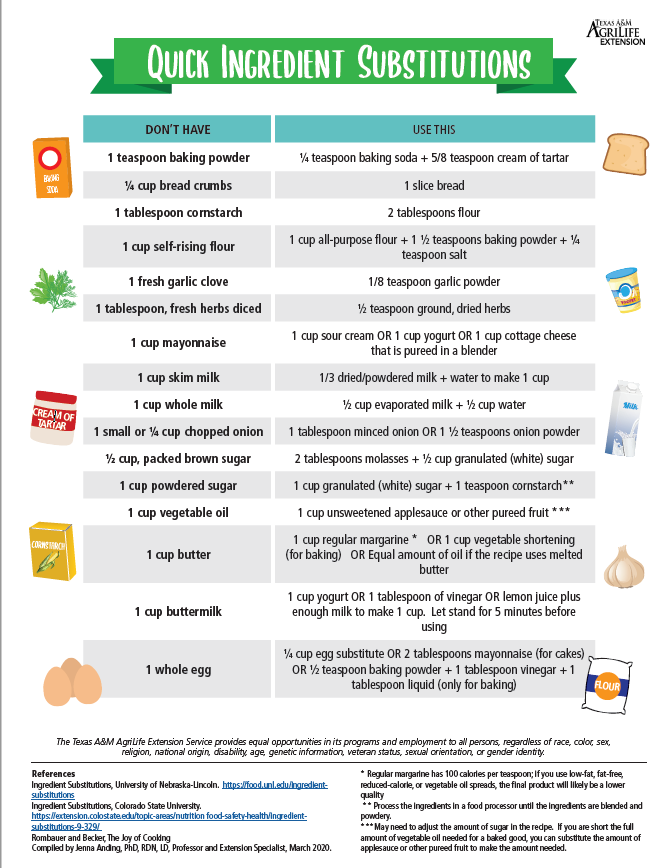

Lindsey Breunig-Rodriguez is an Extension Agent for the Better Living for Texans program with the Texas A&M AgriLife Extension Service. She is originally from Grapevine, TX but now calls Waco home. A graduate from Baylor University, she loves to venture out to Cameron Park, visit the local Farmers Market, and try out the awesome eateries in Waco. If you see her and hear a loud bark, that’s her pup Lucy Ann just saying hello.
The Act Locally Waco blog publishes posts with a connection to these aspirations for Waco. If you are interested in writing for the Act Locally Waco Blog, please email ashleyt@actlocallywaco.org for more information.
Welcome back to the Better Living for Texans blog post! I hope everyone has been staying safe and healthy during this hectic time. This month I want to highlight a fruit that is helpful in improving the maintenance of your immune system because of its Vitamin A and C components. Can anyone guess what this fruit could be? If you guessed oranges, you are correct! We are however, going to be focusing on a certain type of oranges this month – mandarin oranges!
Mandarin oranges grow on trees in many climates, but thrive in sunnier climates. They are harvested in the late winter, which makes them a great spring fruit. If you have been to the grocery store lately, they are stocked in a few different places. You can find raw mandarins, usually in bags, in the fresh produce area of your local grocery store. Other places that you might find mandarins include, canned good aisle and the frozen fruit section.

When looking for these delicious mandarins, I have a few helpful tips! When choosing mandarins to bring home to your family look for a glossy skin and avoid bruising or other visible damages. In the canned good isle look for mandarins with no sugar added labels because mandarins already have natural sugars in them. Some grocery stores don’t carry frozen mandarins on the regular so if you would like to add this in a smoothie, a great alternative to this is to freeze your own mandarins. They can be frozen whole or peeled but the best results for taste and texture after being thawed is keeping the mandarins whole. Mandarins can last up to 10 months while being frozen.
It is recommended by the USDA that adults should consume 1 ½ – 2 cups of fruits daily. According to https://fruitsandveggies.org/expert-advice/size-tangerine-will-yeild-12-cup-serving-fruit/ , two small mandarins or one large mandarin is equivalent to one half cup serving of fruit. This can be a fun and easy way to incorporate more fruits into your diet by grabbing a mandarin on the go! This peel and eat fruit is great for all ages! Want to add more mandarins into your diet? Below are a few recipes to try!
Recipes

Sierra French is a senior Public Health major at Baylor University. She is from Burnet, Texas. She loves to spend time on the lake or hiking around the Hill Country with my Australian Shepherd pup, Levi. After graduation she hopes to find herself working in a career that helps people better understand how to enjoy a healthy lifestyle.
By Lindsey Breunig-Rodriguez
In 2020, the Better Living for Texans posts will focus on a seasonal fruit or vegetable. Material shared will include the nutritional value/benefits, how to select and store, cook and use, and other fun facts regarding the chosen fruit or vegetable! Have a request? Let us know!
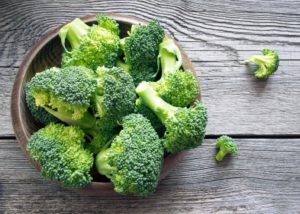
Fruits and vegetables provide our bodies with nutrients that keep us running and going. Like a car for our bodies to run and function properly we need the right fuel – we wouldn’t fuel our cars on mouthwash! So what do we need? For vegetables, per USDA dietary guidelines it is recommended we consume 3 Cups of veggies daily. Any vegetable or 100% vegetable juice counts as a member of the Vegetable Group. Vegetables can be prepared multiple ways and enjoyed raw or cooked; fresh, frozen, canned, mashed, or dried/dehydrated. For reference, 1 cup from the Vegetable Group is equal to 1 cup of raw or cooked vegetables or vegetable juice, or 2 cups of raw leafy greens. If 3 cups of vegetables make you cringe, start small, start measurable!
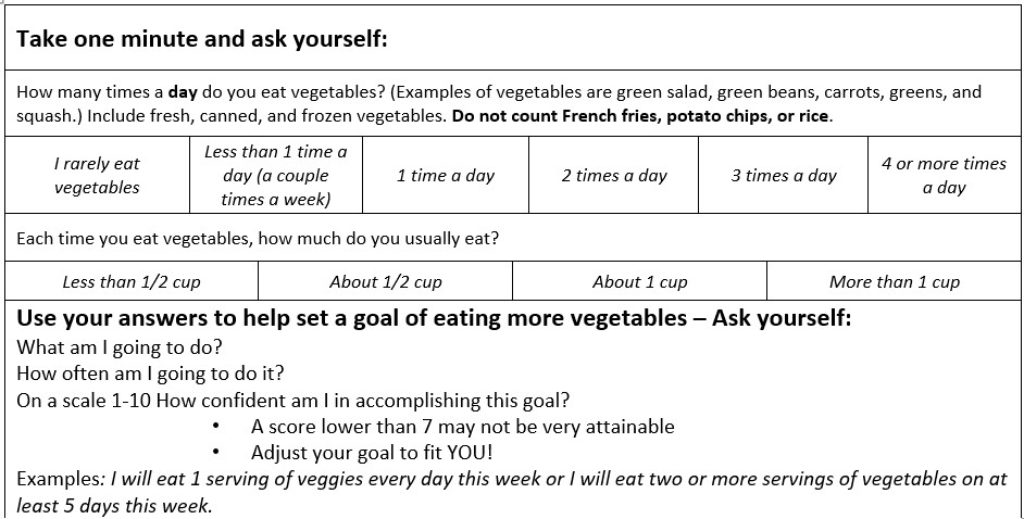
As you may have guessed from the title, broccoli is the highlighted vegetable for March! Broccoli is a personal favorite, because it is used in a variety of dishes and prepared in multiple formats. I like to encourage participants to try a vegetable prepared several different ways before ruling it out of your diet. You may not like something steamed but fall in love with it roasted.
Broccoli is a “cool season” crop meaning its season is during the spring and fall. As we know Texas seasons can be wild but remembering spring and fall will help in finding the cheapest and best quality broccoli when shopping. When selecting broccoli, look for firm bright or dark green heads, and once home store unwashed in the refrigerator. It is recommended to use broccoli within 3-5 days of purchasing.
When you are ready to use the broccoli – use the entirety of the product!! The picture below shows a great step-by-step demonstration of how to use florets (the top piece that is like a tree) and the stalks (the bottom piece that is like a tree trunk). (Information courtesy of Montana State University Extension)
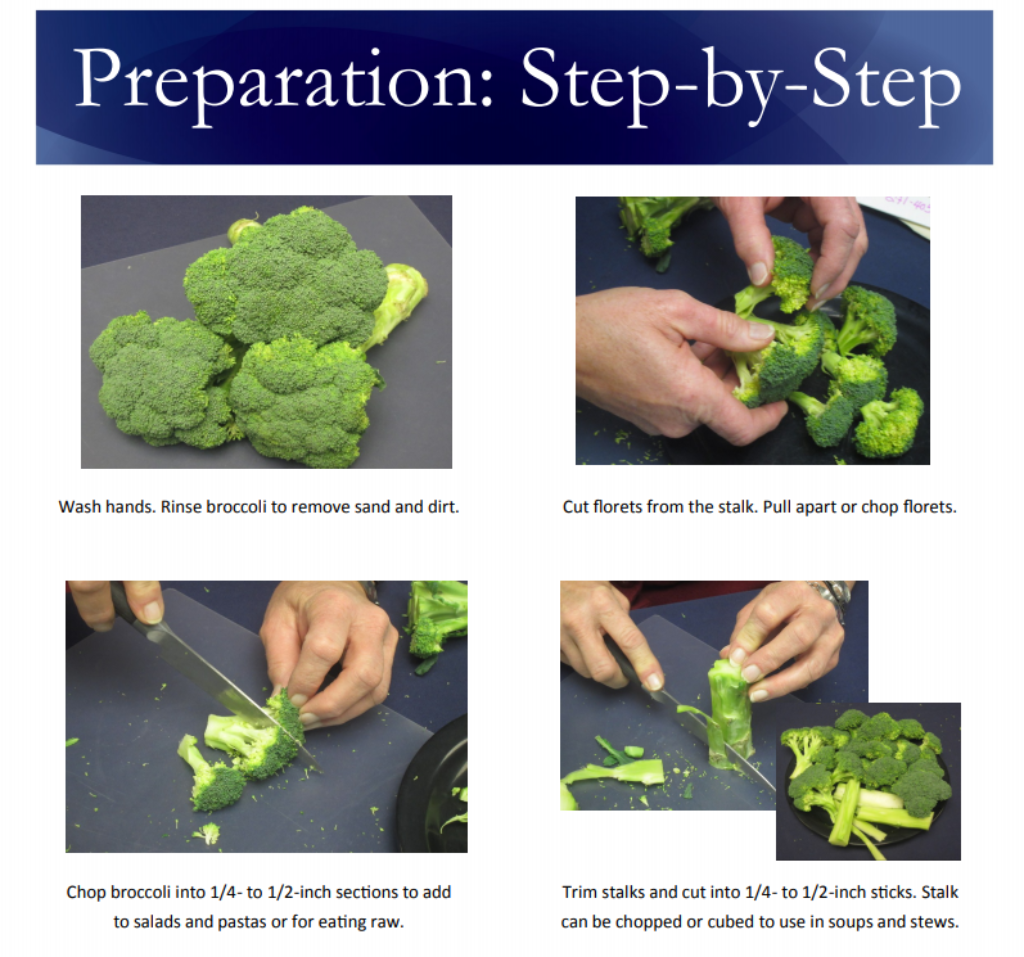
Once ready, enjoy the many ways you can cook with broccoli:
- raw on a salad or alone with a favorite dip (maybe hummus or a low-fat yogurt dip)
- steam in the microwave or over the stove
- roast alone or with other veggies (my personal favorite with extra garlic and pepper!)
- stir-fried with other veggies and a lean protein
Incorporating more vegetables into your diet may seem like a challenge; however, with a vegetable like broccoli preparing it multiple ways will ensure your menu does not get boring but rather works towards our goal of 3 cups a day! Are you ready to broc-n-roll!?
Want to incorporate more broccoli and veggies into your diet? Start out with some of these great recipes below:
Broccoli Salad – This sweet and savory salad is packed with antioxidants to keep you feeling great!
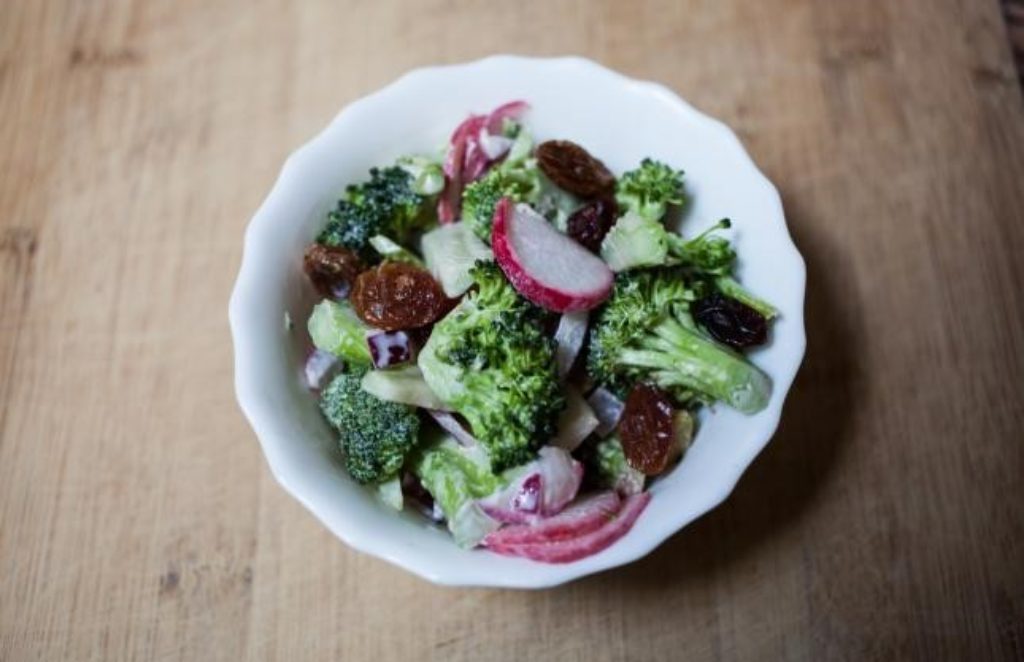

Beef and Broccoli Stir Fry – Enjoy this ‘how to’ video to see step by step instructions.
Chicken, Broccoli & Cheese Skillet Meal– Add other vegetables such as peas, grated carrots or chopped bell peppers
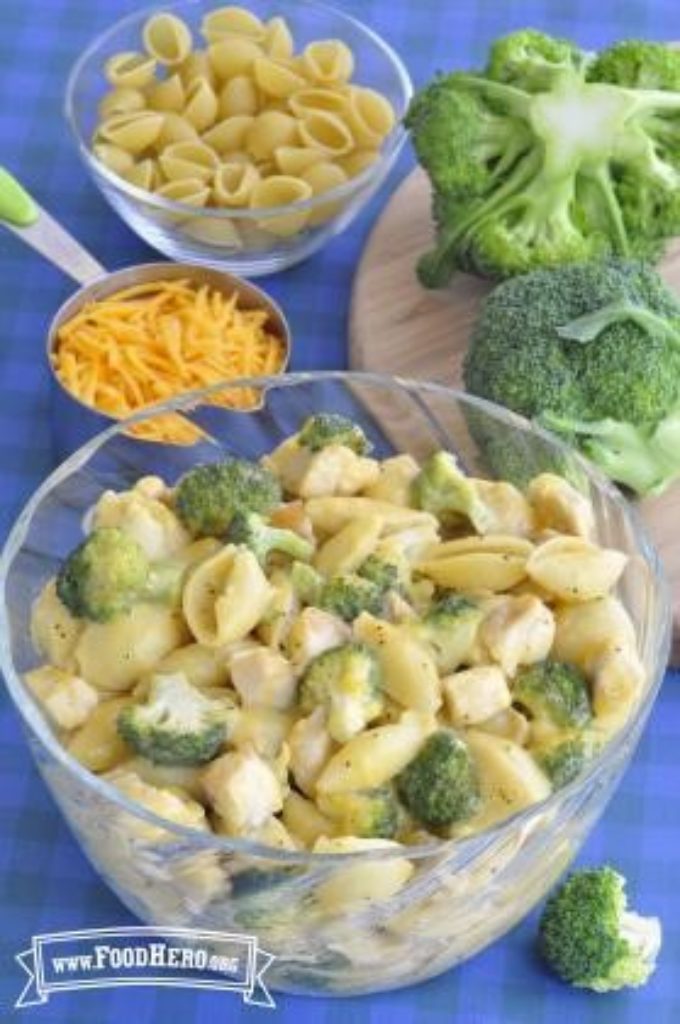
Lindsey Breunig-Rodriguez is an Extension Agent for the Better Living for Texans program with the Texas A&M AgriLife Extension Service. She is originally from Grapevine, TX but now calls Waco home. A graduate from Baylor University, she loves to venture out to Cameron Park, visit the local Farmers Market, and try out the awesome eateries in Waco. If you see her and hear a loud bark, that’s her pup Lucy Ann just saying hello.
The Act Locally Waco blog publishes posts with a connection to these aspirations for Waco. If you are interested in writing for the Act Locally Waco Blog, please email ashleyt@actlocallywaco.org for more information.
By Lindsey Breunig
In 2020, the Better Living for Texans posts will continue, and we are excited to announce that monthly posts will start focusing on a seasonal fruit or vegetable. Material shared will include the nutritional value/benefits, how to select and store, cook and use, and other fun facts regarding the chosen fruit or vegetable! Have a request? Feel free to share and let us know!
Per USDA dietary guidelines it is recommended we consume 1 – 2 Cups of fruit daily. Fruit may be fresh, canned, frozen, or dried, and may be whole, cut-up, or pureed, it all counts! In general 1 cup of fruit or 100% fruit juice, or ½ cup of dried fruit can be considered as 1 cup from the Fruit Group. Like vegetables, we want a variety of color on our plate and in our diet, one way to vary your plate is by choosing fruits that are in season! As we transition into the winter months one may traditionally label winter colors as “darker” and “warmer,” but today’s highlighted fruit is not the case! Winter season is “when you’ll find the bright greens, eye-popping yellows, and oh-so-lively oranges.” Let’s bring out the bright colors and talk about citrus fruits!
Citrus includes but is not limited to oranges. Other types of citrus fruits are lemons, limes, mandarins (tangerines), grapefruit, and kumquats. (source) When shopping for citrus look for a peel that is smooth in texture versus a thicker bumpy peel. Avoid citrus that has soft or mushy spots. Citrus fruits come from a tree and do not continue to ripen once they are picked. For juicy citrus choose a heavier a fruit, and for good flavor take a whiff and know a sweet fragrance often means good flavor. For continued best quality of the fruit, store in the refrigerator’s crisping drawer. Citrus will keep in the fridge for several weeks compared to a few days to a week if stored on the counter. (Source). Citrus fruits are high in vitamin C and folate. Vitamin C is important for growth and repair of all body tissues, helps heal cuts and wounds, and keeps teeth and gums healthy. When it comes to citrus fruits there are a range of options available.
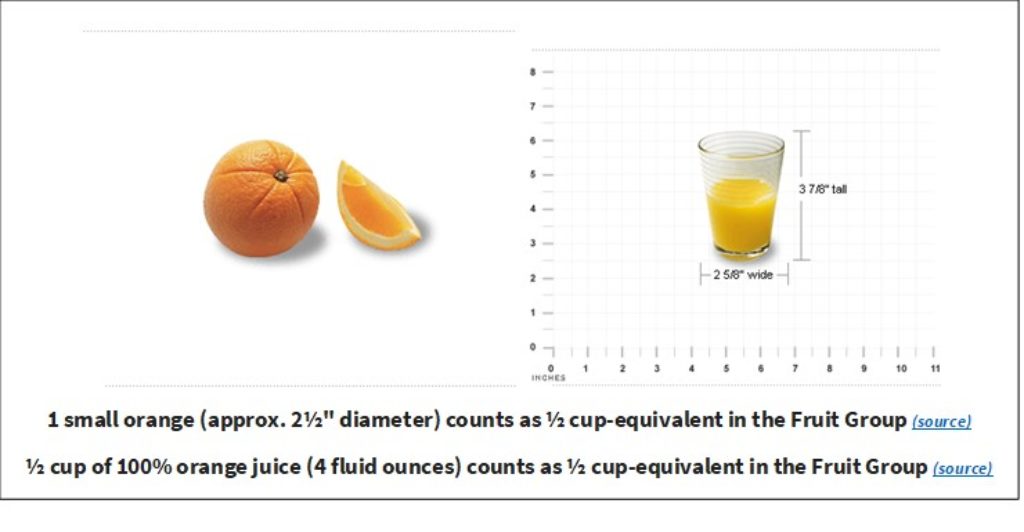
Orange juice is a common staple for many, but one must use caution to ensure it is not the only source of fruit. Juice should make up half or less of total recommended fruit or vegetable intake. Whole or cut-up fruit will provide dietary fiber and reduce sugar intake when compared to juice. Think about how many oranges it takes to make a cup of juice – about 3 oranges! Though naturally occurring, the sugar from one orange compared to a cup of juice adds up quick! If you don’t mind the flavor, try cutting your juice with water to reduce sugar. Additionally, when selecting juice, read the nutritional label on the back to verify there are 0g of Added Sugars.
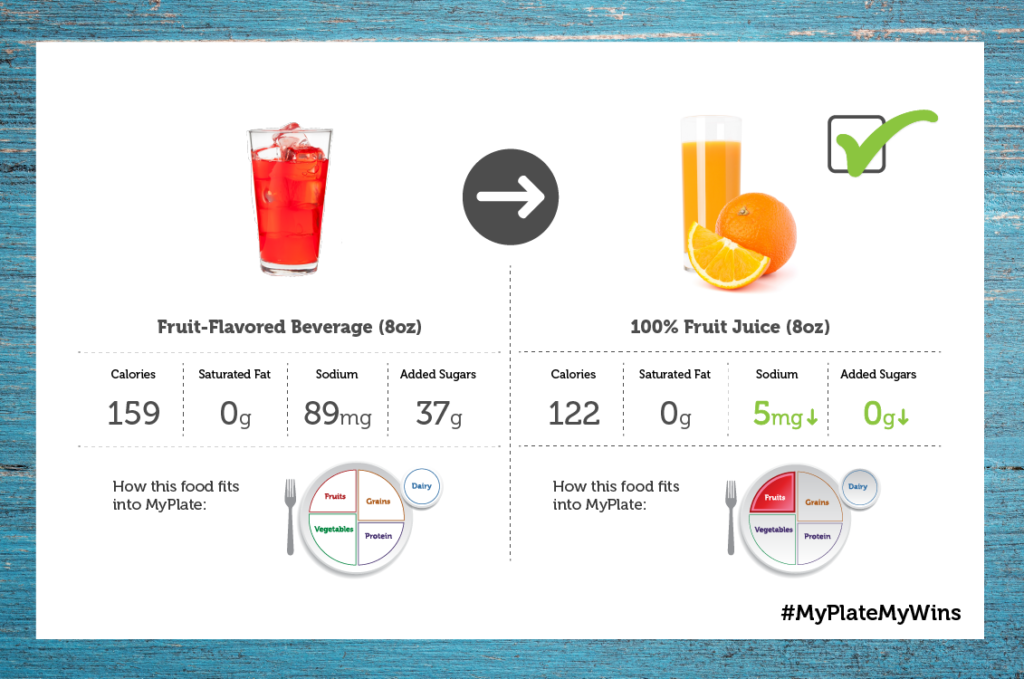
Precut fruit can be convenient and a great snack option, but often has a higher price tag. Luckily during citrus season mandarin (tangerine) oranges are often on sale and make for a great snack. Trying to find the best deal? Always compare the unit price to see the best deal. See the example below, what would you choose?

Inspired to add more citrus into your winter cooking? Check out some of these great recipes!
- Orange and Ginger Salmon
- Grapefruit Salad and Vinaigrette
- Asparagus, Mandarin Orange, Chicken and Rice

Lindsey Breunig is a graduate of Baylor University and currently works as the Better Living for Texans Educator for the Texas A&M AgriLife Extension Service. She is originally from Grapevine, TX and now calls Waco home. Here in Waco she loves to venture out to Cameron Park, visit the local Farmers Market, and try out the awesome eateries in Waco. If you see her and hear a loud bark, that’s her pup Lucy just saying hello.
USDA is an equal opportunity provider and employer. This material was funded by USDA’s Supplemental Nutrition Assistance Program — SNAP. To learn more about the Supplemental Nutrition Assistance Program (SNAP) or to apply for benefits, visit www.yourtexasbenefits.com
The Act Locally Waco blog publishes posts with a connection to these aspirations for Waco. If you are interested in writing for the Act Locally Waco Blog, please email ashleyt@actlocallywaco.org for more information.
By Lindsey Breunig
Next time you are sitting with friends and family I challenge you to play a game of ‘who can think of the most pumpkin spice products on the market’ – I imagine you will have a very extensive list! For many, pumpkins are a sign of cooler weather, fall colors, and the holiday season approaching. Pumpkins may attract all the attention, but the gourd family includes more of these seasonal vegetables called winter squashes. Available in multiple shapes, colors, and unique characteristics, one may see them as a table decoration; however, today we are moving the decorations into our diet!
According to the USDA dietary guidelines it is recommended we consume 2 ½ – 3 Cups of vegetables daily. To maximize the benefits of vegetables we are encouraged to vary our veggies. The squash’s deep colors are a great indication of being high in vitamins, minerals, and fiber, while also being low in calories. Common varieties seen are butternut, delicata, spaghetti, kabocha (find at the Waco Downtown Farmers Market!), acorn, and sugar pumpkins.
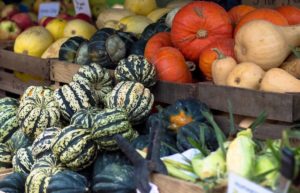
The common characteristic and the reason I avoided cooking squash for so long is the tough skin. You can be very mean to a squash and still couldn’t ruin its day! (A little fall humor for everyone) The skin of a squash is very thick and becomes thicker as the produce matures; however, you want the firm exterior because soft skin can indicate an unripe squash or a spoiled squash. Test by knocking on the squash with your knuckle: if it sounds hollow, it is ripe! Now, there sits a squash on your counter with the only thing coming between the delicious vegetable inside is the tough outside. Below we are going to discuss ways to safely handle and overcome the squash fear.
Click to see How to Prepare Winter Squash or read below!
Start with washing the squash under running water, remove excess dirt with a vegetable brush & dry with a clean towel. A vegetable peeler works well to remove the skin from butternut squash or sugar pumpkins but microwaving first will soften the squash for easier handling.
Pierce the squash several times with a sharp knife. Place on a microwave safe plate or dish. Microwave the squash on high for 5-8 minutes (depending on use for recipe). Allow squash to cool enough for touch. Once cooled, cut off the top inch of the squash (including the stem).
For texture like mashed potatoes: Cut the squash in half. Scoop out the seeds with a spoon. Place the two halves face down on the microwave safe plate or dish with 1/2 cup of water. Microwave on high for 5 minutes. Check if the squash can be easily scooped with a spoon. If not, cook another 3-5 minutes or until the flesh is the texture of a cooked potato. Set aside to cool. Rather than boiling you can use this technique and use winter squash in these Mashed Sweet Potatoes.
For texture like roasted potatoes: *You may want to microwave less to ensure squash is not too soft* Cut squash in half. Dice the squash with a knife without cutting through the skin. Scoop out the diced pieces or scoop out the flesh and lay evenly on a baking sheet. Drizzle with oil & spices. Roast at 400 degrees until tender. Or try this recipe for Spicy Baked Squash!
Other ways to use winter squash!
Pinched on time? Check out the grocery store for precut squash. Always compare the unit price to see the best deal. See the example below, what would you choose?

Using frozen? Try this tasty recipe! Savory Bread Pudding with Kale and Butternut Squash
Enjoy!

Lindsey Breunig is a graduate of Baylor University and currently works as the Better Living for Texans Educator for the Texas A&M AgriLife Extension Service. She is originally from Grapevine, TX and now calls Waco home. Here in Waco she loves to venture out to Cameron Park, visit the local Farmers Market, and try out the awesome eateries in Waco. If you see her and hear a loud bark, that’s her pup Lucy just saying hello.
USDA is an equal opportunity provider and employer. This material was funded by USDA’s Supplemental Nutrition Assistance Program — SNAP. To learn more about the Supplemental Nutrition Assistance Program (SNAP) or to apply for benefits, visit www.yourtexasbenefits.com
The Act Locally Waco blog publishes posts with a connection to these aspirations for Waco. If you are interested in writing for the Act Locally Waco Blog, please email ashleyt@actlocallywaco.org for more information.
Resources: Winter Squash, Prepare Winter Squash
By Lindsey Breunig
About a year ago we highlighted the Better Living for Texans program, and today we are returning to give you program updates and highlights! (Don’t worry, next month we will back to our regularly scheduled green veggie recipes!) Better Living for Texans (BLT) is a statewide nutrition education program within the Texas A&M AgriLife Extension Service (Texas A&M AgriLife). The program is for adults and children that are part of the Supplemental Nutrition Assistance Program and/or SNAP eligible.
Statistics show that 1 out of 6 Texans struggle with food insecurity, hunger, and eat less than the daily recommended allowance of fruits and vegetables. Additionally, Texas children and adults are less physically active than recommended. McLennan County is no exception and it is critical that we change these statistics in a positive direction.
BLT’s focus is to teach people how to prepare healthy meals, improve their physical fitness, save money at the grocery store, grow their own foods, and adopt better food safety habits. We provide facts and not the latest trends. BLT is here to empower individuals, families, and communities to make positive changes for healthier lives on limited resources.
Program delivery varies between location and audience. You may see BLT programming at health fairs, community centers, food pantries, or church events! Additionally, groups or participants may request for programs with a group they know or work with. From there we can choose from several available curriculums and tailor the program to fit the audience needs. If there is an interest in health and wellness, we are there!
Program Highlights:
At our programs we want healthy eating to be practical and attainable to everyone. We are here to challenge the notion that “it’s too expensive to eat healthy.” We are excited to also offer a curriculum specifically for seniors where we discuss steps to remain independent by choosing healthy diets and staying physically active.

If you want to focus on physical activity, we have fitness programs that encourage individuals to find their favorite activity and get moving. For example, we offer “Walk and Talks” that combine walking and learning. We also coordinate “Walk Across Texas” an eight week program that encourages teams made of family, friends, and coworkers to log their exercise with the goal to walk across Texas.
Maybe you have always wanted to garden, but you don’t know how to get started. Our gardening curriculum begins at the basics. Education includes how to select a garden location, how to compost, plant and water, and control insects. Participants learn how to grow fruits and vegetables and learn how to cook with produce grown from their own garden. The BLT program relies on the knowledge from the numerous Master Gardeners (another Texas A&M AgriLife program!) here in Waco. They are a great resource for learning how to grow fruits and vegetables!
Overall BLT is here to make health attainable and practical for all. This is done through providing research and evidence-based nutrition, health and wellness knowledge to empower individuals, families, and communities to make positive changes for healthier lives. BLT creates opportunities, and changes lives.
If you are interested or want to know more about the Better Living for Texans program here in McLennan County, please do not hesitate to reach out, and ask. We would love to get involved with your group or organization!
You can call the County Extension office and ask for Lindsey at: 254-757-5180 or directly email Lindsey.Breunig@ag.tamu.edu.
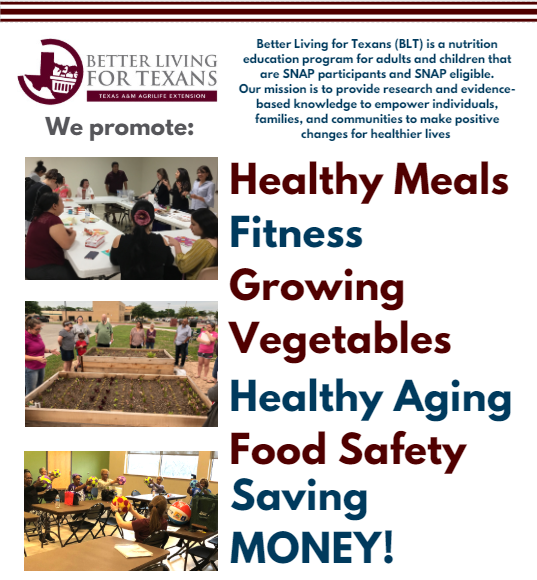

Lindsey Breunig is a graduate of Baylor University and currently works as the Better Living for Texans Educator for the Texas A&M AgriLife Extension Service. She is originally from Grapevine, TX and now calls Waco home. Here in Waco she loves to venture out to Cameron Park, visit the local Farmers Market, and try out the awesome eateries in Waco. If you see her and hear a loud bark, that’s her pup Lucy just saying hello.
USDA is an equal opportunity provider and employer. This material was funded by USDA’s Supplemental Nutrition Assistance Program — SNAP. To learn more about the Supplemental Nutrition Assistance Program (SNAP) or to apply for benefits, visit www.yourtexasbenefits.com
The Act Locally Waco blog publishes posts with a connection to these aspirations for Waco. If you are interested in writing for the Act Locally Waco Blog, please email ashleyt@actlocallywaco.org for more information.
By Lindsey Breunig
Whatever life stage you are in, let’s join the new school year and celebrate the start by making some healthy green habits. Unless your school allegiances bleed green or are celebrating a green-themed holiday, incorporating regular dark leafy greens into your diet can be tricky. When I encourage someone to eat more greens some comebacks I hear are: “they are gross” “I only like the white lettuce” “they are bitter or taste like grass” or “that is rabbits’ food” – Well today our goal is to squash these comebacks!
Some common dark leafy greens are kale, chard, collard greens, arugula, spinach, and bok choy. A half-cup serving is 10 to 25 calories and jam-packed with bursting health benefits. Dark leafy green vegetables contain many nutrients, such as vitamin A, vitamin C, antioxidants, fiber, folate, vitamin K, magnesium, calcium, iron and potassium. The USDA’s MyPlate recommends adults and children over 9 years old to eat 1 ½ to 2 cups of dark green vegetables per week. Generally, 1 cup of raw or cooked vegetables or vegetable juice, or 2 cups of raw leafy greens can be considered as 1 cup. The nutrients from dark leafy greens support a variety of functions in the body. For example, the nutrients support good vision, increase immune function, regulate blood pressure, and act as antioxidants to potentially help prevent certain cancers.
(Source: https://www.choosemyplate.gov/vegetables)
Dark leafy greens often have an intense flavor which can be off-putting. Unfortunately, simply knowing these veggies are nutritional superstars does not always make them taste any better. Below we will discuss ways to make them more appetizing! For storing, washing, and keeping leafy greens fresh click here.
- Tender greens such as spinach or baby kale are great for salads. If incorporating more leafy greens into your diet is a new change, try making the salad with a familiar lettuce and half with a dark green one. Use a citrus-based dressing to help balance the strong flavor of the greens.
- Remove tough stems. For new “green eaters” the stems are often more bitter and tough to eat. Additionally, this will reduce cooking time and help avoid over-cooking the greens.
- When cooking with kale: Tougher curly kale is best for soups or stews, while tender Lacinato (flatter leaves) and baby kale are best in salad or as chips.
- When braising at a low temperature for an extended period, a pinch of sugar can help overcome the bitterness of collard and mustard greens.
- Sauté vs. boil: sautéing greens will help lock in nutrients better than boiling. Sauté greens with olive oil, onion and garlic to add flavor. For a crunch and heart healthy fat add chopped nuts like walnuts or pecans.
Green Recipes:

A class favorite: Chicken Vegetable Soup with Kale
We made this during the summer & kids love the crunch: Bok Choy Noodle Crisp
Add kale or spinach to a fruit smoothie for a quick and delicious breakfast or snack: Simple Green Smoothie

Lindsey Breunig is a graduate of Baylor University and currently works as the Better Living for Texans Educator for the Texas A&M AgriLife Extension Service. She is originally from Grapevine, TX and now calls Waco home. Here in Waco she loves to venture out to Cameron Park, visit the local Farmers Market, and try out the awesome eateries in Waco. If you see her and hear a loud bark, that’s her pup Lucy just saying hello.
USDA is an equal opportunity provider and employer. This material was funded by USDA’s Supplemental Nutrition Assistance Program — SNAP. To learn more about the Supplemental Nutrition Assistance Program (SNAP) or to apply for benefits, visit www.yourtexasbenefits.com
The Act Locally Waco blog publishes posts with a connection to these aspirations for Waco. If you are interested in writing for the Act Locally Waco Blog, please email ashleyt@actlocallywaco.org for more information.
- « Previous
- 1
- 2
- 3
- 4
- Next »

